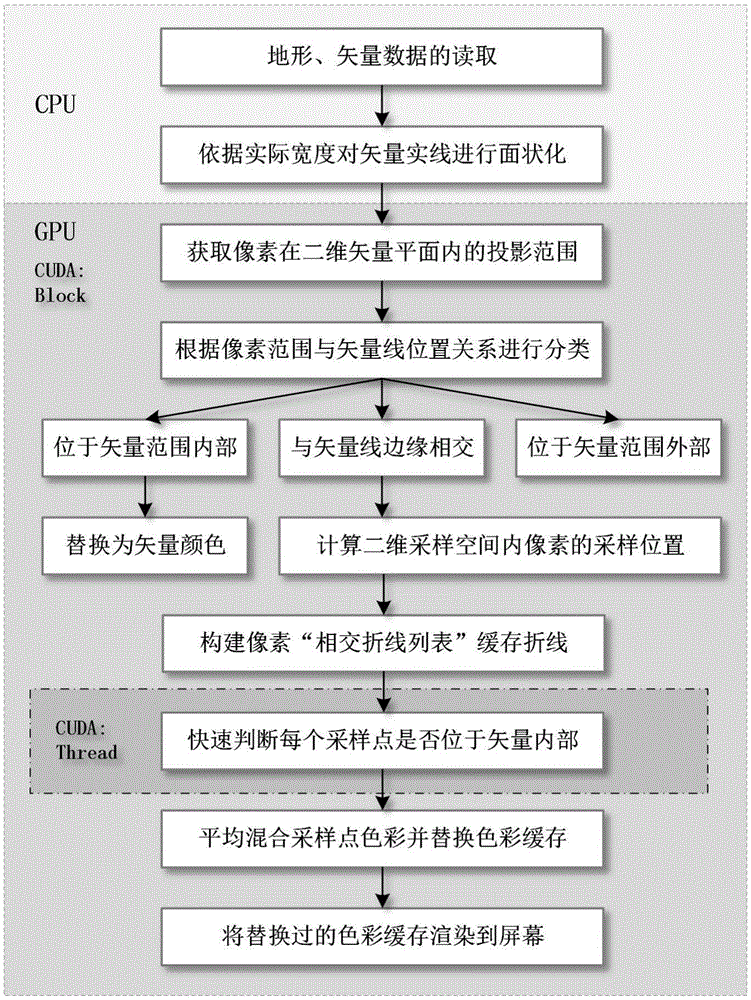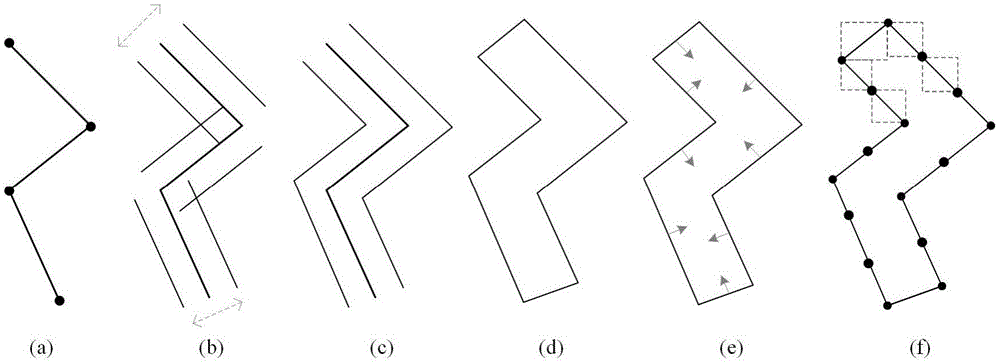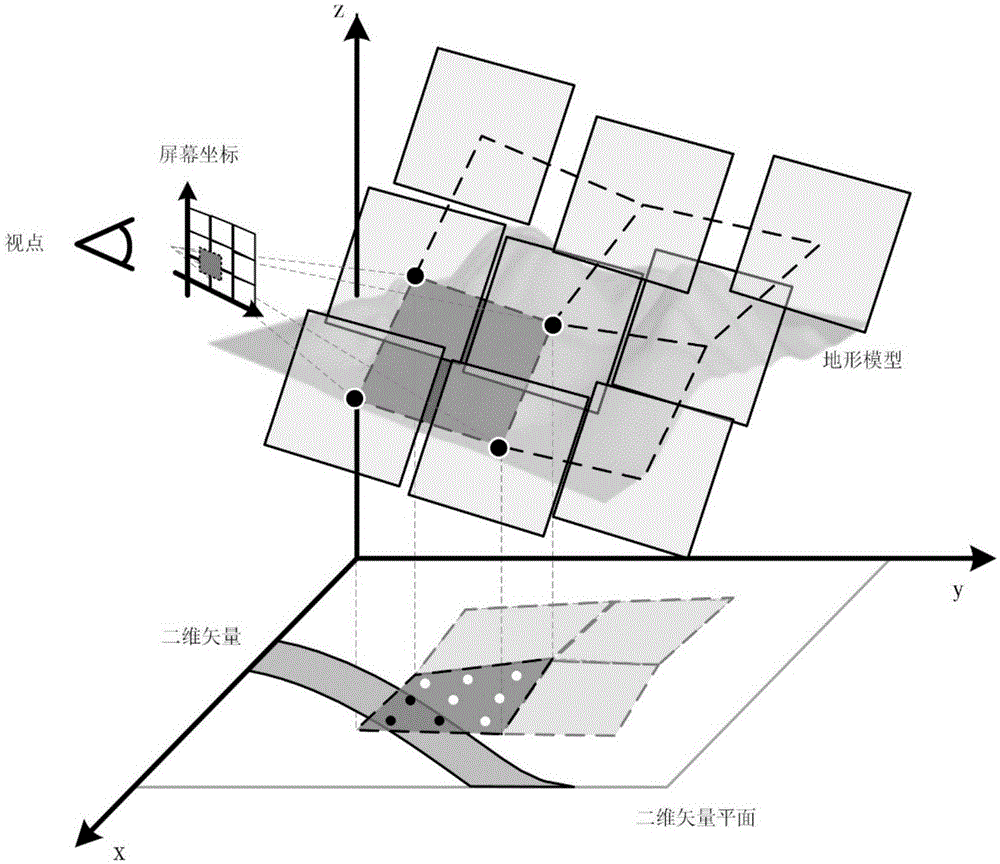A method for eliminating visual errors of two-dimensional vector solid lines in a three-dimensional scene
A vector solid line and two-dimensional vector technology, applied in 3D image processing, image data processing, instruments, etc., can solve the problems of jagged edges of vector elements and unsuitable expression of vector lines, etc., so as to eliminate the phenomenon of aliasing and speed up real-time Interactive performance, eliminating the effect of suspension
- Summary
- Abstract
- Description
- Claims
- Application Information
AI Technical Summary
Problems solved by technology
Method used
Image
Examples
Embodiment Construction
[0044] Below in conjunction with specific example, further set forth the present invention, should be understood that these examples are only used to illustrate the present invention and are not intended to limit the scope of the present invention, after having read the present invention, those skilled in the art can modify various equivalent forms of the present invention All fall within the scope defined by the appended claims of this application.
[0045] like figure 1 As shown, a method for eliminating visual errors of a two-dimensional vector solid line in a three-dimensional scene disclosed by an example of the present invention, the main steps are as follows:
[0046] Step 1: read the terrain and vector data, and process the vector line according to its width. Compared with the vector line symbol without width, the surface vector line with width is easier to form a concrete feeling for the expression of roads and water systems in 3D scenes. Its width can change with th...
PUM
 Login to View More
Login to View More Abstract
Description
Claims
Application Information
 Login to View More
Login to View More - R&D
- Intellectual Property
- Life Sciences
- Materials
- Tech Scout
- Unparalleled Data Quality
- Higher Quality Content
- 60% Fewer Hallucinations
Browse by: Latest US Patents, China's latest patents, Technical Efficacy Thesaurus, Application Domain, Technology Topic, Popular Technical Reports.
© 2025 PatSnap. All rights reserved.Legal|Privacy policy|Modern Slavery Act Transparency Statement|Sitemap|About US| Contact US: help@patsnap.com



